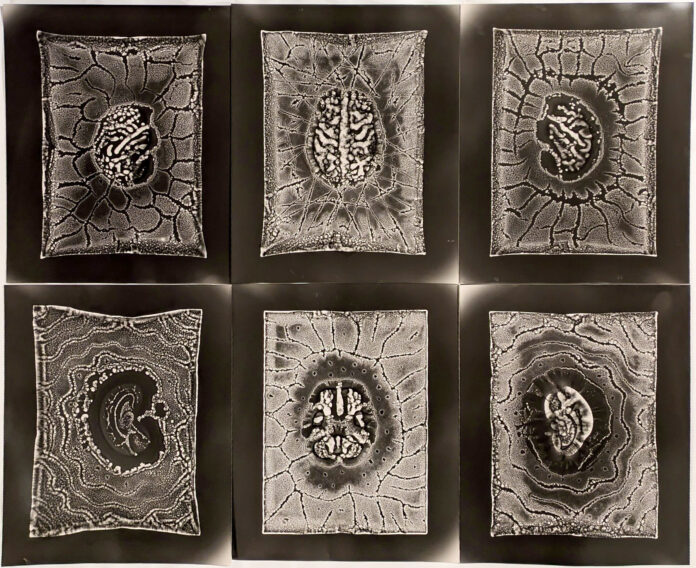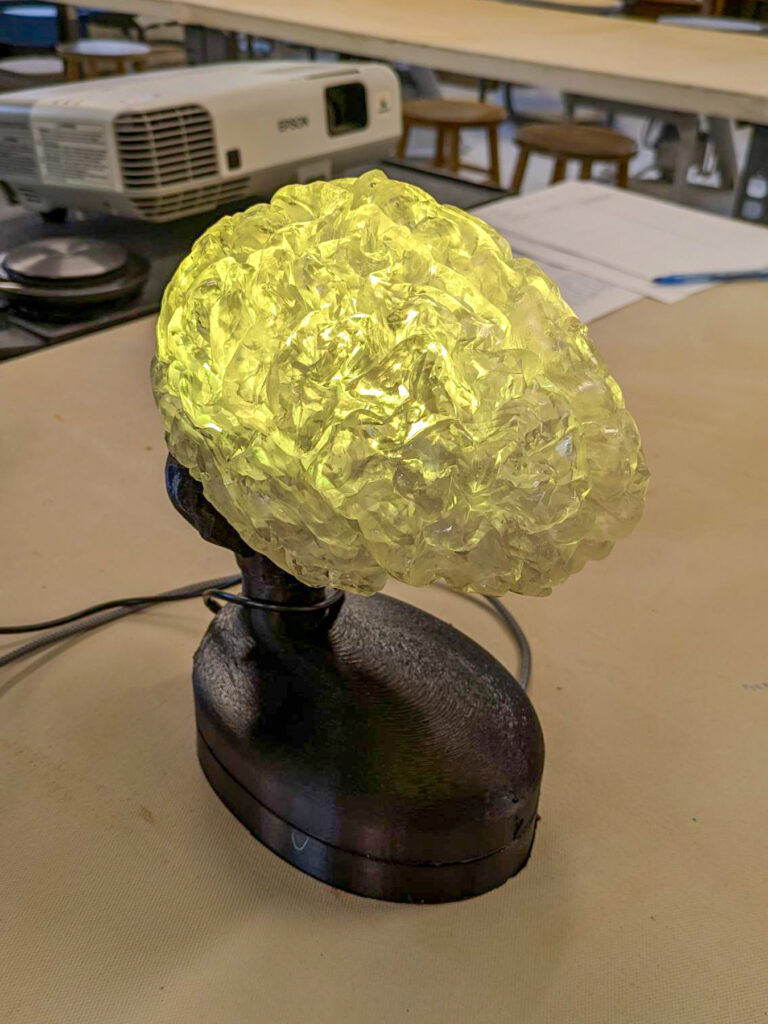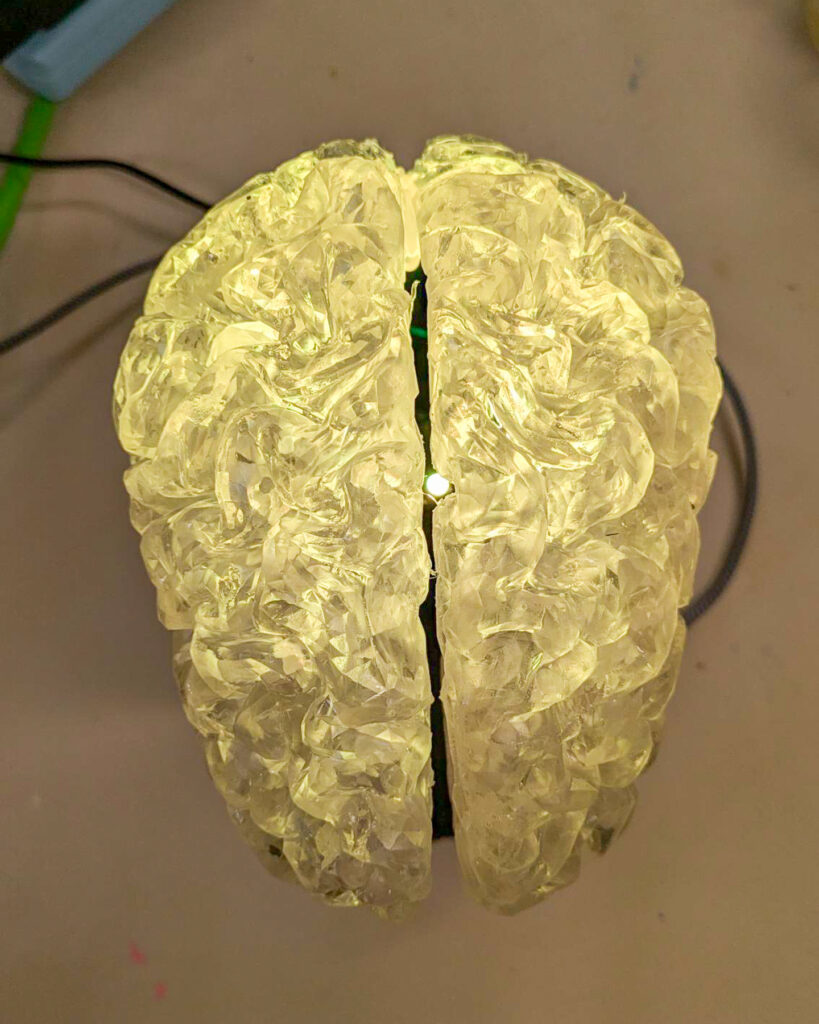
Mercer University art professor Craig Coleman and Emory University-based neuroscientist Dr. Amanda Jacob have teamed up to create an innovative art exhibit that explores the brain’s response to climate change.

Their installation, titled “Thermal Reverberations,” features interactive sculptures of the brain. It is part of Resilient Earth, an art show that aims to empower viewers to recognize their contributions to the planet’s health and discover a path toward a more resilient future.
The show, a collaboration between Science Gallery Atlanta at Emory University and Accenture, is on display Sept. 14-April 30 at Northlake Mall in Atlanta.
“Thermal Reverberations” was among 11 proposals out of 187 submissions selected for the Resilient Earth exhibition. The idea for it developed from a conversation between Coleman and Dr. Jacob in which they discussed ways to connect climate change to individuals. They talked about the idea of neuroplasticity — the brain’s ability to change in response to internal and external experiences — and wanted to visually represent that in their work.
“Our idea was to examine neuroplasticity in the context of climate change and think about how we can change our minds about what we do personally and how that can affect climate change in a positive way,” Coleman said.

Coleman created a 3D sculpture of the brain using triangles and trapezoids and covered them with images of neurons from Dr. Jacob’s lab. They are lenticular photographs, which are prints made on a hard, rigid surface that appear to move if tilted.
“When viewers are walking around the sculpture, there will be constant motion. Everything will be constantly changing depending on where you’re looking,” Coleman said.
He also worked with artist Jeremy Barker to create life-sized transparent models of the human brain illuminated by LED lights. Barker 3D-printed the brain models and built a thermal camera that recognizes viewers’ body temperature and changes the color of the lights to reflect their body heat. There also will be glass sculptures of the brain and projected images from Dr. Jacob’s lab and nature, as well as an audio collage made from the sonification of data recorded from neurons firing.
“One of the things that we’re trying to do is make a connection between everyone’s personal connection to climate change and talk about how neuroplasticity happens in good ways and bad ways, so hopefully this will leave people thinking about that,” Coleman said.”
Tickets for Resilient Earth are free and may be reserved online. The exhibit is open 10 a.m.-5 p.m.











